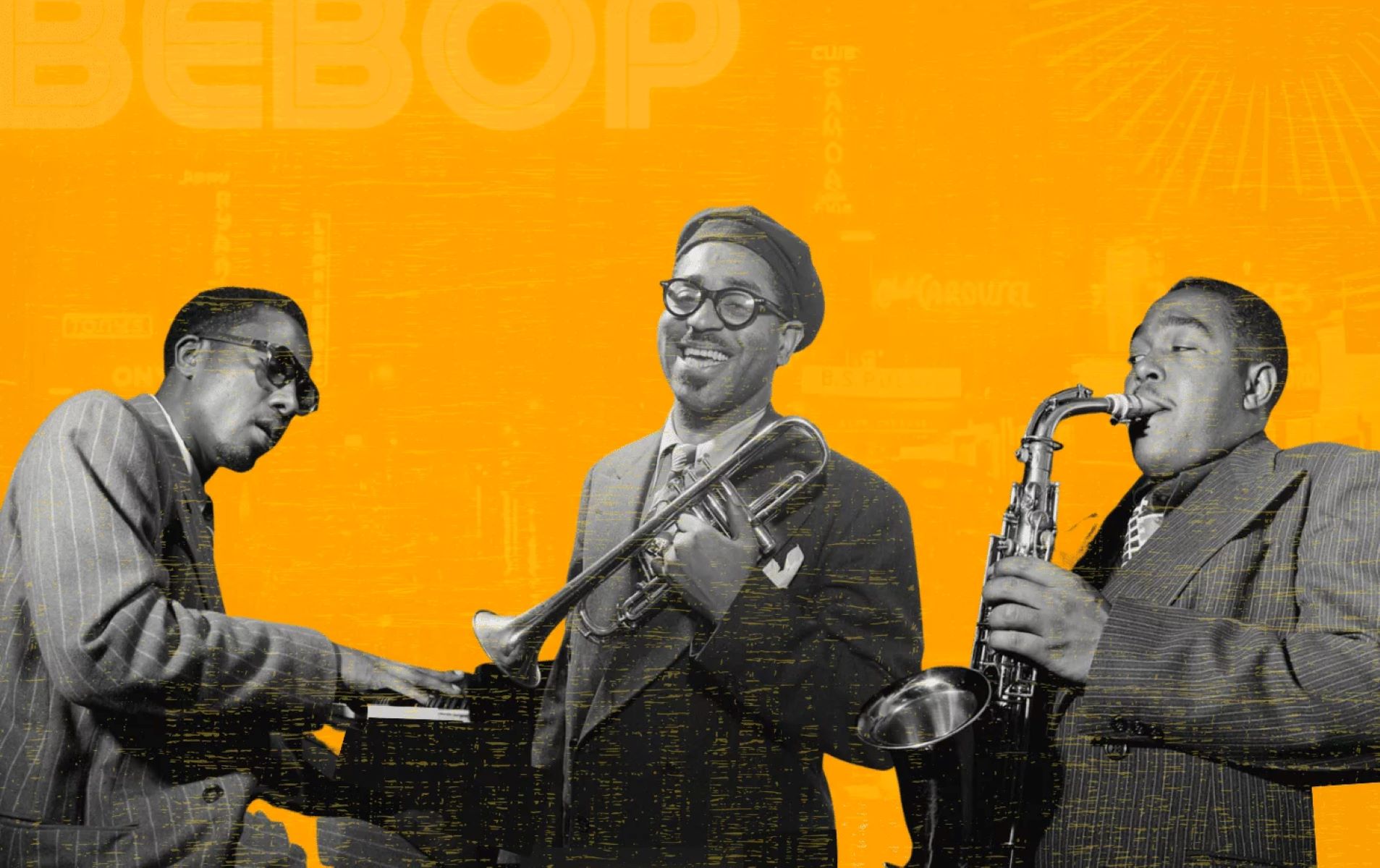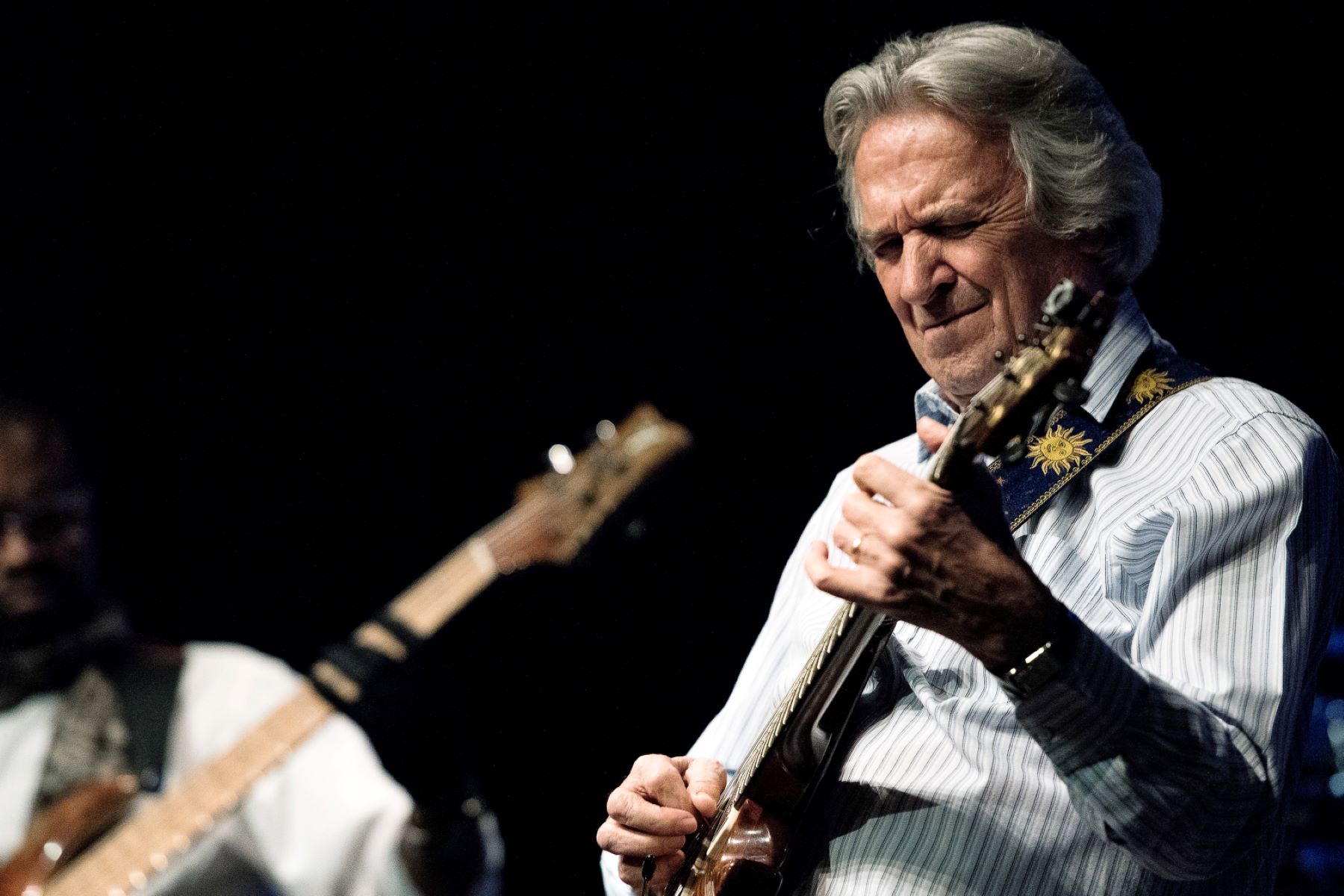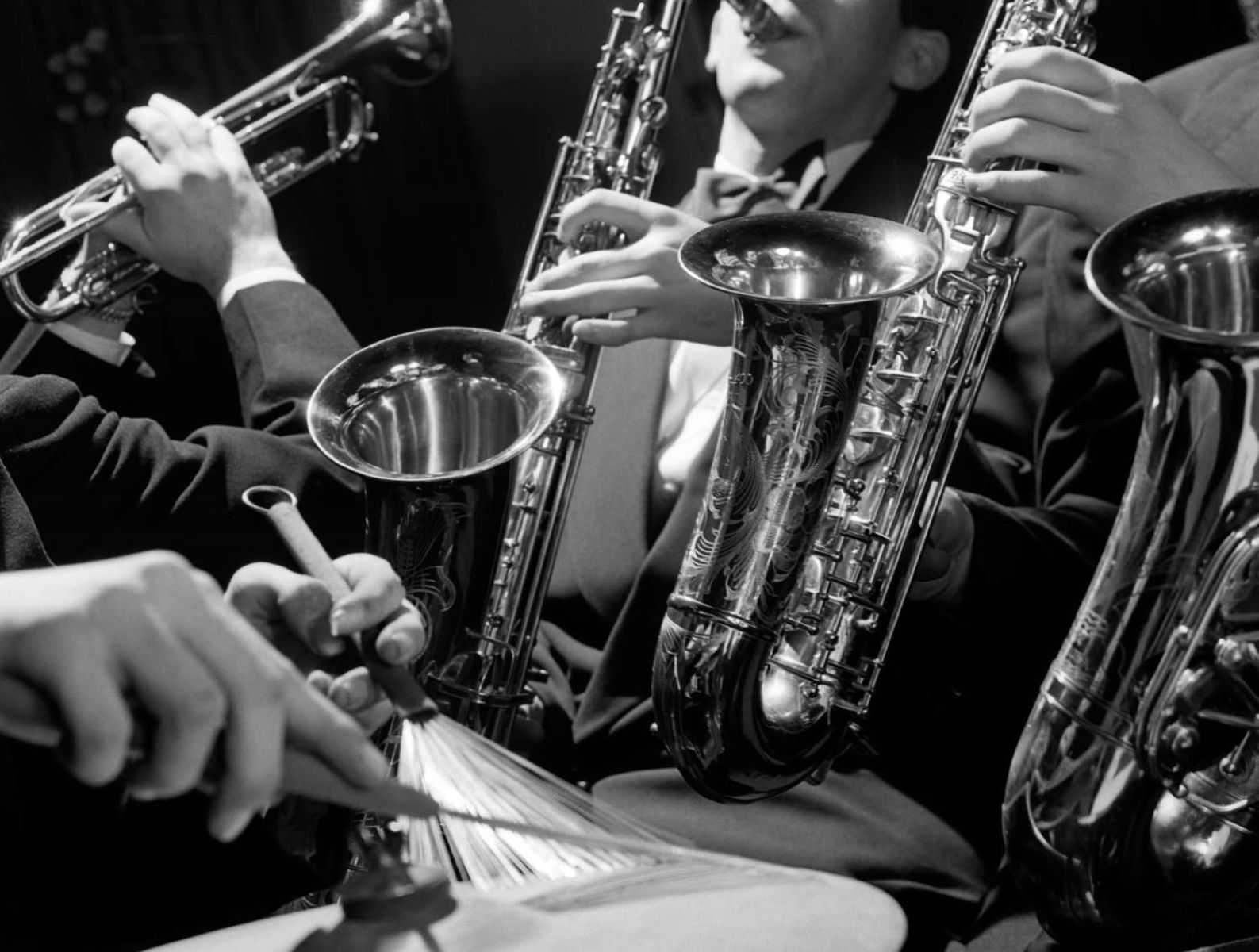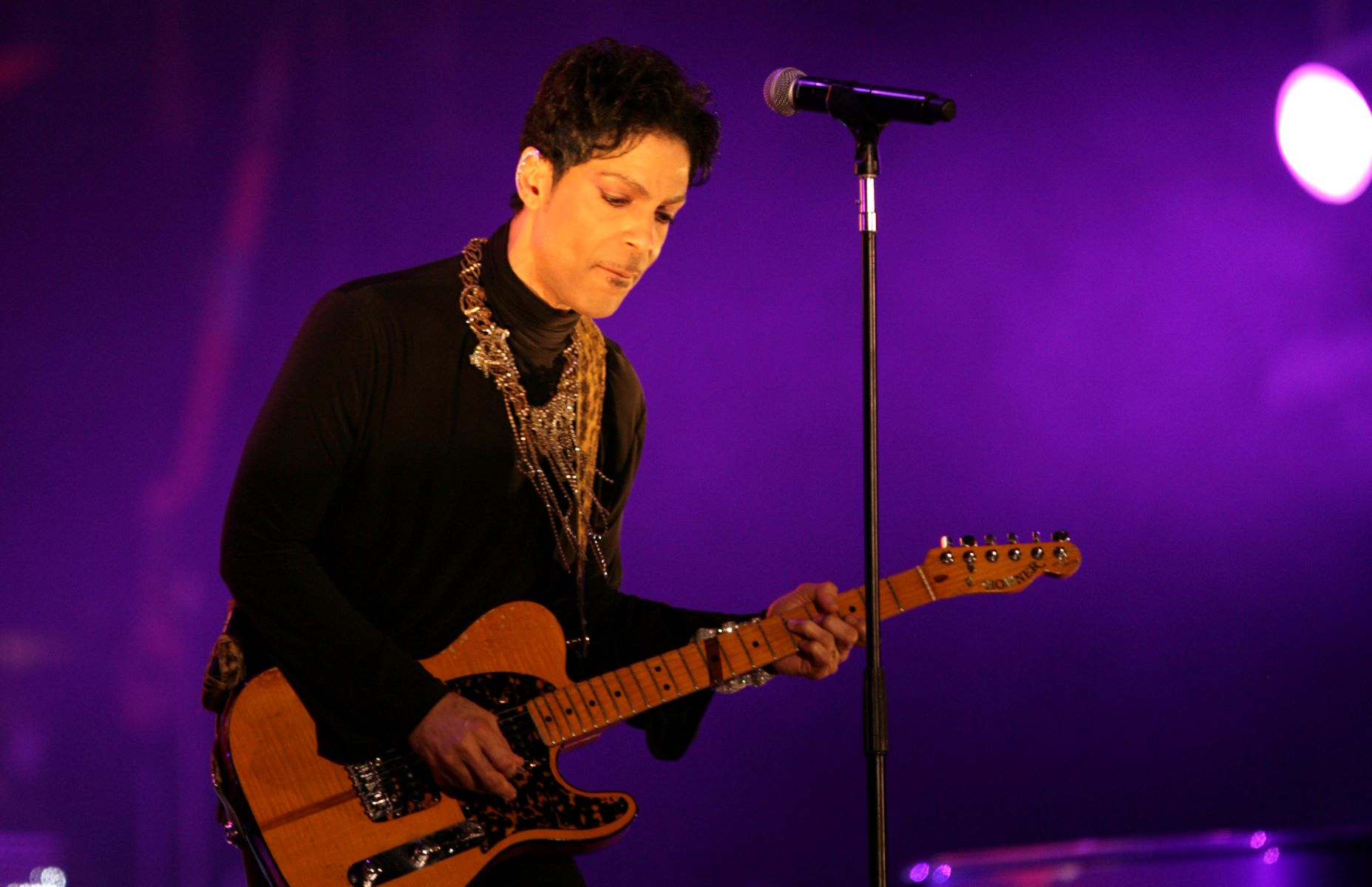Home>Production & Technology>Musician>Who Was The Biggest Musician In Bebop?


Musician
Who Was The Biggest Musician In Bebop?
Published: January 28, 2024
Discover the biggest musician in bebop and delve into their mesmerizing music. Uncover the genius of this influential artist and their impact on the world of music.
(Many of the links in this article redirect to a specific reviewed product. Your purchase of these products through affiliate links helps to generate commission for AudioLover.com, at no extra cost. Learn more)
Table of Contents
Introduction
Bebop, a subgenre of jazz that emerged in the 1940s, revolutionized the music industry with its intricate melodies, complex harmonies, and improvisational nature. It was a musical movement that pushed the boundaries of traditional jazz, giving rise to a new generation of incredibly talented musicians. In this article, we will explore the lives and contributions of some of the biggest musicians in the bebop era.
During the early 1940s, jazz was undergoing a significant transformation. Musicians sought to break free from the constraints of swing music, which was dominant at the time, and explore new realms of musical expression. Bebop, characterized by its fast tempo, unpredictable rhythms, and virtuosic solos, emerged as a response to this desire for innovation.
The pioneers of bebop drew inspiration from earlier jazz styles, such as swing and the blues, and pushed the boundaries of what was considered conventional at the time. They introduced a new level of complexity and intensity to jazz, challenging both musicians and audiences alike.
While there were numerous influential musicians in the bebop era, some names stand out for their immense contributions to the genre. Charlie Parker, Dizzy Gillespie, Thelonious Monk, Bud Powell, and Max Roach are among the key figures who helped shape the sound and direction of bebop. Each had their unique style and approach to music, leaving an indelible mark on the genre and future generations of musicians.
In the following sections, we will delve deeper into the lives and legacies of these exceptional musicians, exploring their musical achievements and the impact they had on the bebop movement. From the virtuosic saxophone playing of Charlie Parker to the percussive brilliance of Max Roach, we will uncover the stories behind the individuals who propelled bebop to new heights of creativity and expression.
Early Influences on Bebop
Bebop was not born in a vacuum; it was shaped by a diverse range of musical influences that laid the foundation for its unique sound and style. One of the primary influences on bebop was the swing era, which dominated the jazz scene in the 1930s and early 1940s. Swing music, characterized by its energetic and danceable rhythms, provided a platform for musicians to experiment with improvisation and showcase their technical prowess.
The blues also played a significant role in shaping bebop. Many of the early bebop musicians came from a background rooted in the blues, which provided them with a deep understanding of melodic and harmonic structures. The influence of the blues can be heard in the emotive and soulful solos that are a hallmark of bebop.
Another crucial influence on bebop was the music of pianist and composer Art Tatum. Tatum’s virtuosic playing and innovative approach to harmony had a profound impact on young musicians, pushing them to explore uncharted musical territory. His intricate melodic lines and rapid-fire improvisation set a new standard for technical proficiency in jazz.
The innovations of the saxophonist Lester Young also left a lasting impression on the bebop movement. Young’s unique tone and relaxed phrasing challenged the traditional notions of saxophone playing and opened up new possibilities for expression. His influence can be heard in the lyrical and melodic style of many bebop saxophonists, including Charlie Parker.
Finally, the music of the West Coast-based guitarist Charlie Christian cannot be overlooked. Christian’s pioneering use of the electric guitar in jazz laid the groundwork for the bebop musicians to explore new sonic possibilities. His innovative solos and rhythmic approach set the stage for the bebop revolution.
These early influences, along with the socio-cultural climate of the time, provided fertile ground for the emergence of bebop. The desire to break away from the constraints of the swing era and create something fresh and innovative led to a new musical language that would shape the future of jazz.
Key Figures in Bebop
Bebop was propelled by a group of exceptionally talented and innovative musicians who became the key figures of the genre. Their contributions to bebop not only changed the face of jazz but also pushed the boundaries of what was thought possible in music. Let’s take a closer look at some of these influential figures.
Charlie Parker, also known as “Bird,” is widely regarded as one of the greatest saxophonists in the bebop era. His virtuosic playing, technical brilliance, and pioneering improvisational style set a new standard for saxophone players. Parker revolutionized jazz with his innovative melodies, complex harmonies, and lightning-fast improvisations that left audiences in awe.
Dizzy Gillespie was another key figure in bebop who played a crucial role in shaping the genre. Known for his blistering trumpet solos and his charismatic stage presence, Gillespie’s contributions to jazz were groundbreaking. He brought Afro-Cuban rhythms and harmonies into the bebop style, creating a fusion that was both innovative and infectious.
Thelonious Monk, the innovative pianist, made significant contributions to bebop with his unconventional approach to harmony and rhythm. Monk’s distinctive playing style, characterized by dissonant chords and angular melodies, added a unique flavor to the genre. His compositions, such as “Round Midnight” and “Straight, No Chaser,” are now considered jazz standards.
Bud Powell, a virtuoso pianist, made his mark on bebop with his technical prowess and innovative use of harmony. Powell’s rapid-fire runs, complex chord voicings, and rhythmic inventiveness pushed the boundaries of piano playing in jazz. His influence can still be heard in the playing of countless modern jazz pianists.
Max Roach, a pioneering drummer, brought a fresh approach to rhythm in bebop. His precise and intricate drumming style revolutionized jazz drumming and laid the foundation for the modern approach to the instrument. Roach’s collaborations with Charlie Parker and Dizzy Gillespie are legendary, and his recordings are considered essential listening for any jazz enthusiast.
These key figures, alongside other notable bebop musicians, collectively shaped the course of jazz history. They broke away from the formulaic constraints of swing music, embraced musical complexity, and pushed the boundaries of improvisation. Their innovative spirits and virtuosic abilities left an indelible mark on jazz and paved the way for future generations of musicians.
Charlie Parker: The Bird
Charlie Parker, also known as “Bird,” was an American saxophonist and composer who revolutionized the world of jazz with his innovative playing style and improvisational abilities. Born on August 29, 1920, in Kansas City, Parker began playing the saxophone at a young age and quickly emerged as one of the most influential figures in the bebop movement.
Parker’s playing was characterized by his remarkable technical skill, creativity, and melodic genius. He possessed a prodigious ability to improvise intricate and complex melodies with lightning speed, earning him a reputation as one of the greatest improvisers in jazz history. His unique phrasing, use of chromaticism, and mastery of harmony pushed the boundaries of what was thought possible on the saxophone.
Throughout his career, Parker collaborated with many prominent musicians of his time, including Dizzy Gillespie, Thelonious Monk, and Max Roach. Together, they created a new language in jazz, filled with fast tempos, unexpected chord changes, and virtuosic solos. Their music marked a departure from the swing era and laid the foundation for the bebop movement that would shape the future of jazz.
Parker’s innovative compositions, such as “Confirmation,” “Ornithology,” and “Anthropology,” are now considered jazz standards and continue to be studied, performed, and admired by musicians around the world.
Unfortunately, Parker’s life was plagued by personal struggles, including addiction and mental health issues. These challenges had a profound impact on his career and overall well-being. However, even amidst his struggles, Parker’s musical brilliance continued to shine through.
Tragically, Charlie Parker passed away on March 12, 1955, at the age of 34. Though his life was cut short, his contributions to jazz and bebop endure as a testament to his genius and innovation.
Charlie Parker’s impact on the world of music cannot be overstated. His incredible technical ability, innovative improvisations, and melodic ingenuity forever transformed the landscape of jazz. Parker’s legacy lives on as a source of inspiration for countless musicians who continue to push the boundaries of their own artistry.
Dizzy Gillespie: The Architect
Dizzy Gillespie, born John Birks Gillespie on October 21, 1917, in Cheraw, South Carolina, was a legendary trumpeter, composer, and bandleader. Gillespie’s contributions to jazz and his role in the development of bebop placed him among the most important and influential figures in the genre.
Gillespie’s distinct style and virtuosity on the trumpet made him a true visionary in jazz. He possessed a remarkable technique, with dazzling speed, and an innovative approach to improvisation. His use of complex bebop lines, harmonies, and rhythms pushed the boundaries of what was traditionally expected in jazz music.
One of Gillespie’s most significant contributions was his pioneering efforts in introducing Afro-Cuban rhythms and harmonies to jazz, creating a fusion now known as “Cubop” or “Afro-Cuban jazz.” Gillespie’s experimentation with these Latin influences brought a new level of excitement and vibrancy to the music. The fusion of Cuban rhythms, such as the mambo and cha-cha-cha, with bebop jazz created a rhythmically infectious and musically groundbreaking sound.
Gillespie’s larger-than-life personality and stage presence earned him a reputation as an engaging performer. His trademark puffed-out cheeks and bent trumpet bell became iconic symbols of his quirky and energetic style. He embraced the joy and exuberance of music, often incorporating humor and charm into his performances.
Throughout his career, Gillespie collaborated with numerous other jazz luminaries, including Charlie Parker and Thelonious Monk. Together, they pushed the boundaries of jazz, giving rise to a new era of inventive and harmonically complex music.
Gillespie’s notable compositions, such as “A Night in Tunisia,” “Manteca,” and “Salt Peanuts,” showcased his incredible talent for crafting memorable melodies and incorporating intricate rhythmic patterns. These compositions have become jazz standards, beloved by both musicians and audiences alike.
Aside from his musical contributions, Gillespie was also a passionate advocate for civil rights and equality. His role as a mentor to younger generations of musicians, particularly in his later years, demonstrated his commitment to preserving and advancing jazz as an art form.
Dizzy Gillespie’s influence on jazz cannot be overstated. His innovative playing style, his fusion of Afro-Cuban rhythms, and his commitment to pushing the boundaries of the genre have left an indelible mark on the history of music. Gillespie’s legacy as an architect of bebop and a pioneer of Afro-Cuban jazz continues to inspire and shape the future of jazz.
Thelonious Monk: The Innovative Pianist
Thelonious Monk, born on October 10, 1917, in Rocky Mount, North Carolina, was an American jazz pianist and composer known for his distinctive and innovative approach to music. Monk’s contributions to the bebop and post-bop eras have left an indelible mark on the genre and continue to inspire musicians to this day.
Monk’s playing style was characterized by his unconventional harmonic choices, rhythmic complexity, and idiosyncratic improvisations. His unique use of dissonant chords and angular melodies challenged traditional notions of jazz piano playing, adding a fresh and inventive perspective to the genre.
One of Monk’s most notable contributions was his compositions. His tunes, such as “Round Midnight,” “Straight, No Chaser,” and “Blue Monk,” have become jazz standards, cherished for their distinctive melodies and sophisticated harmonies. Monk’s compositions often showcased his virtuosic abilities on the piano and provided a canvas for his band members to explore their own creativity.
In addition to his distinctive playing and composing style, Monk was known for his unorthodox stage presence and idiosyncratic personality. He was famous for his unique sense of fashion, wearing colorful hats and suits during performances. Monk’s stage presence mirrored his playing style, enigmatic and enigmatic and unconventional.
Monk’s influence extended beyond just his playing and compositions. He was a mentor to many younger musicians and a key figure in the development of jazz education. Monk’s unorthodox teaching methods and his emphasis on individuality and self-expression inspired a new generation of musicians to think outside the box and find their artistic voice.
Although Monk’s career faced some challenges, his talent and innovative spirit gained wider recognition in the 1960s. He received critical acclaim and multiple awards later in his life, solidifying his place as one of the greatest jazz pianists of all time.
Thelonious Monk’s contribution to jazz cannot be overstated. His influential compositions, innovative playing style, and unique personality have made an enduring impact on the genre. Through his music and his teachings, Monk challenged the status quo and encouraged musicians to push the boundaries of creativity and embrace their individuality. Today, his legacy continues to inspire and shape the evolution of jazz music.
Bud Powell: The Piano Prodigy
Bud Powell, born Earl Rudolph Powell on September 27, 1924, in New York City, was an exceptional jazz pianist and composer who played a pivotal role in the development of bebop. Known for his virtuosic technique, innovative improvisations, and mastery of harmony, Powell’s contributions to jazz continue to inspire and captivate audiences around the world.
From a young age, Powell showed prodigious talent on the piano. He absorbed the music of his contemporaries, including Charlie Parker and Thelonious Monk, and crafted his own unique style. Powell’s playing was marked by his lightning-fast runs, intricate chord voicings, and impeccable sense of swing. His ability to effortlessly navigate complex harmonic progressions set him apart as a true piano virtuoso.
Powell’s improvisations were filled with originality and brilliance. His melodic lines flowed seamlessly, showcasing his technical prowess and harmonic ingenuity. He had a natural ability to create captivating solos that captivated audiences and served as a source of inspiration for other musicians.
One of Powell’s notable compositions, “Un Poco Loco,” is considered a bebop classic. This tune epitomizes Powell’s style, blending swinging rhythms, intricate melodies, and unexpected chord progressions. His compositions often challenged conventional structures and pushed the boundaries of what was considered normal in jazz.
Despite his musical brilliance, Powell faced personal struggles throughout his life, including mental health issues and substance abuse. These challenges impacted his career and well-being but did not diminish his musical genius.
Powell’s influence on later generations of pianists cannot be overstated. His technical mastery and groundbreaking improvisations paved the way for future pianistic innovations in jazz. His impact can be heard in the playing of countless pianists who have followed in his footsteps.
Following a period of personal and professional difficulties, Powell experienced a creative resurgence in the late 1950s and early 1960s, recording several albums that further solidified his place in jazz history.
Bud Powell’s legacy as a piano prodigy and influential figure in bebop remains undeniable. His astonishing technical abilities, innovative improvisations, and impactful compositions continue to inspire generations of musicians. Powell’s contributions to jazz not only shaped the evolution of the music but influenced the entire trajectory of the genre.
Max Roach: The Pioneering Drummer
Max Roach, born on January 10, 1924, in Newland, North Carolina, was a pioneering jazz drummer and composer who played a key role in the development of bebop and modern jazz. Known for his innovative drumming style, technical brilliance, and musical sensitivity, Roach’s contributions to jazz continue to resonate and inspire drummers worldwide.
Roach’s drumming approach was characterized by his precise and melodic style. He revolutionized jazz drumming by incorporating melodic elements into his playing, treating the drums not just as percussion instruments, but as melodic voices in their own right. His ability to produce intricate and musical phrases on the drums elevated the role of the drummer in jazz.
One of Roach’s most notable contributions was his collaboration with Charlie Parker and Dizzy Gillespie, which laid the foundation for the bebop movement. His innovative rhythmic patterns and impeccable sense of time provided the backbone for the complex harmonies and fast tempos that defined bebop. Roach’s playing displayed a mastery of polyrhythms, syncopation, and creative use of dynamics.
Beyond his technical prowess, Roach’s drumming was deeply rooted in social and political themes. He used his music as a means of expressing his views on racial inequality and social justice. Roach was committed to using his platform to raise awareness and fight against oppression, showcasing the power of music as a catalyst for change.
In addition to his drumming skills, Roach was an accomplished composer and bandleader. He formed the influential Max Roach Quintet in the 1950s, which became known for its innovative approach to rhythm, improvisation, and collective interplay. Roach’s compositions reflected his social consciousness and had a profound impact on the evolution of jazz.
Roach’s groundbreaking work extended beyond bebop, embracing free jazz and avant-garde styles in the 1960s and 1970s. He collaborated with artists such as Charles Mingus, Archie Shepp, and Anthony Braxton, further expanding the boundaries of jazz music.
Max Roach’s influence on the world of jazz drumming cannot be overstated. His pioneering techniques, innovative rhythms, and commitment to social activism continue to inspire generations of drummers. Roach’s musical legacy serves as a testament to his immense talent and unwavering dedication to pushing the boundaries of jazz music.
Conclusion
The bebop era brought forth a wave of exceptional musicians who transformed the landscape of jazz. From Charlie Parker’s virtuosic saxophone playing to Dizzy Gillespie’s innovative fusion of Afro-Cuban rhythms, these artists pushed the boundaries of music and left an enduring impact on the genre.
Thelonious Monk’s unconventional approach to harmony and rhythm, as well as Bud Powell’s technical brilliance on the piano, further expanded the sonic possibilities of bebop. Max Roach’s pioneering drumming style not only provided the rhythmic foundation for the music but also elevated the role of the drummer as a melodic voice.
These musicians, among many others, reshaped jazz by challenging the status quo, infusing the music with complex harmonies, unpredictable rhythms, and virtuosic improvisations. Their contributions laid the groundwork for future generations of jazz musicians to explore new realms of expression and creativity.
However, it is important to remember that these artists were not solely driven by technical ability and innovation. They were storytellers, using their music to reflect the cultural and social dynamics of their time. They pushed boundaries, not only in the music itself but also in their activism and dedication to social justice.
The legacy of these musicians extends far beyond their time in the bebop era. Their compositions continue to be studied and performed, their recordings continue to inspire, and their innovations continue to shape the future of jazz and beyond.
In conclusion, the bebop era saw the rise of some of the greatest musicians in jazz history. Their immense talent, innovation, and dedication to pushing the boundaries of music continue to leave an indelible mark on the genre. Bebop is a testament to the power of creativity, individuality, and artistic expression, and these musicians serve as a constant source of inspiration for musicians and music lovers around the world.











